View an Art Exhibit
Artolution
Artolution is a global non-profit organization that seeks to strengthen crisis-affected communities through collaborative artmaking. Artolution has been operating in the Rohingya refugee camps of Bangladesh since early 2018, partnering with UNHCR, UNICEF and many other agencies to bring arts programming that impacts mental health, livelihoods and social inclusion for thousands of Rohingya youth. A team of Rohingya artists completed an exhibition that includes 40 murals, 5 interactive recycled musical sculptures and 3 major retrospective pieces.
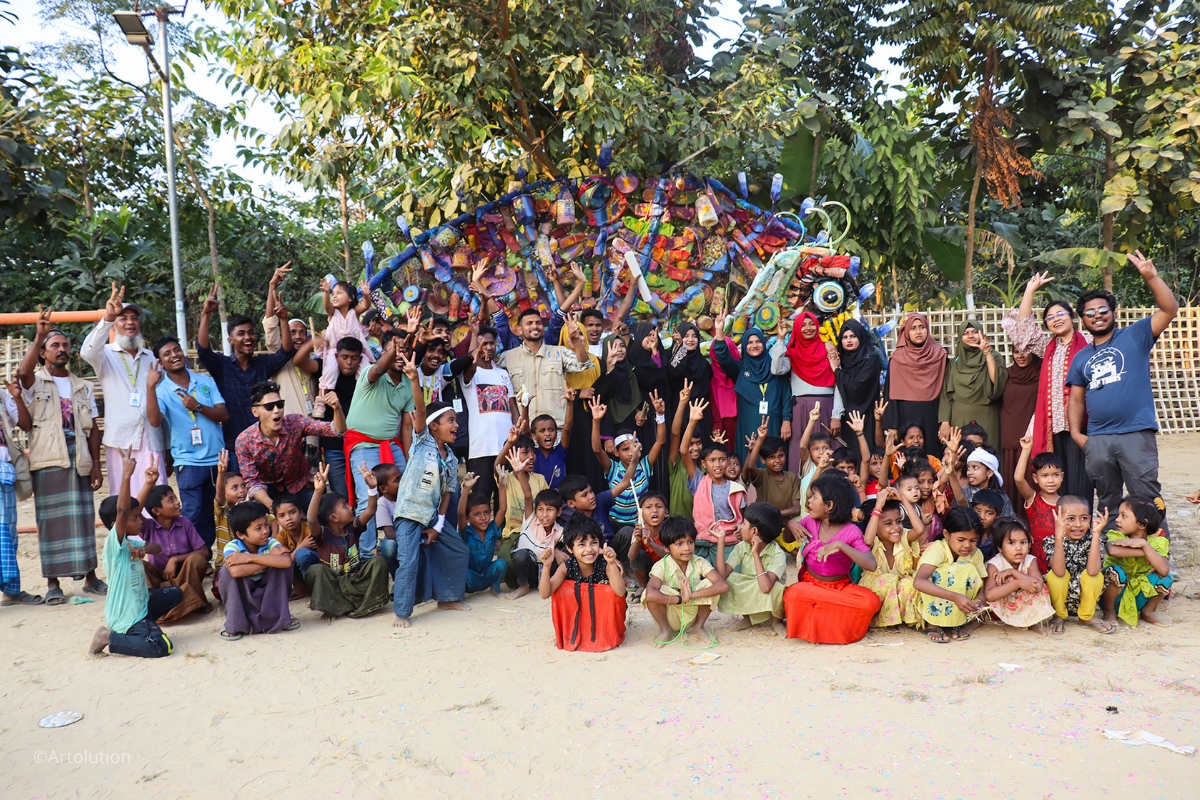
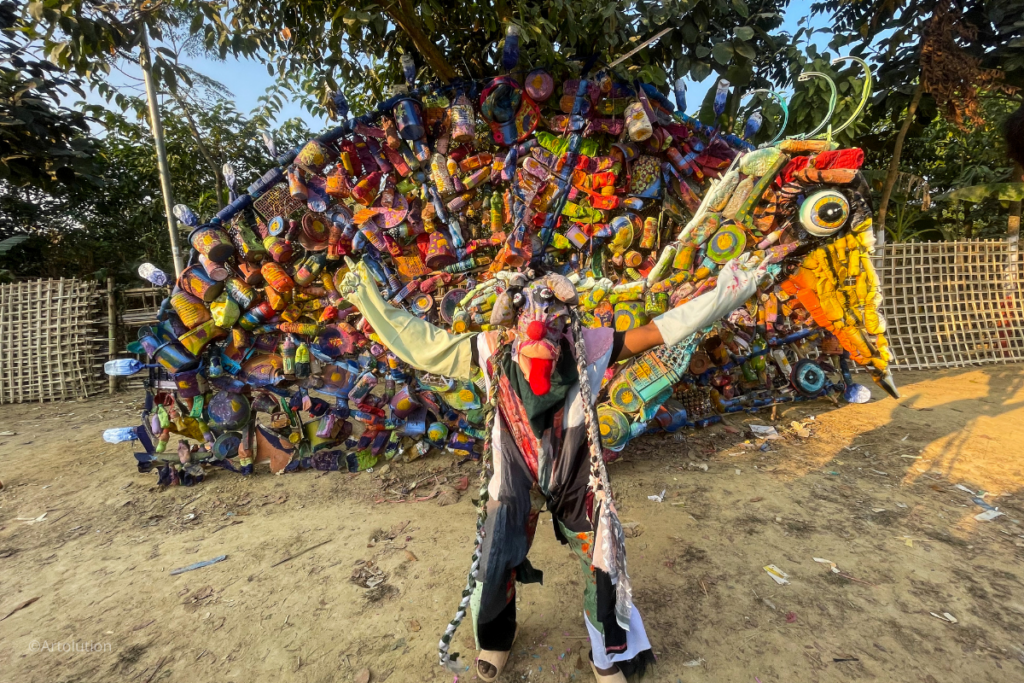
Rohingya artist Mohammad Noor is performing in a costume which was made out of recycled fabrics collected from local garment factories surrounding Uhkia and Cox’s Bazar District. The costume was constructed by Rohingya community artists and youth. The artists are teaching children how to cultivate an interdisciplinary approach to making art so that their imaginations can flourish.
Behind Noor is the sculpture of a peacock, an important animal in Rohingya culture. Artolution Teaching Artist Amin said, “We are making a sculpture out of trash because it sends a message. If we throw trash here and there, it will get stuck in the drain, and because of the trash, the soil becomes infertile. If we collect the trash and color it up, we can make such an amazing Foundstrument Soundstrument like this, we can make things that we love and treasure.”
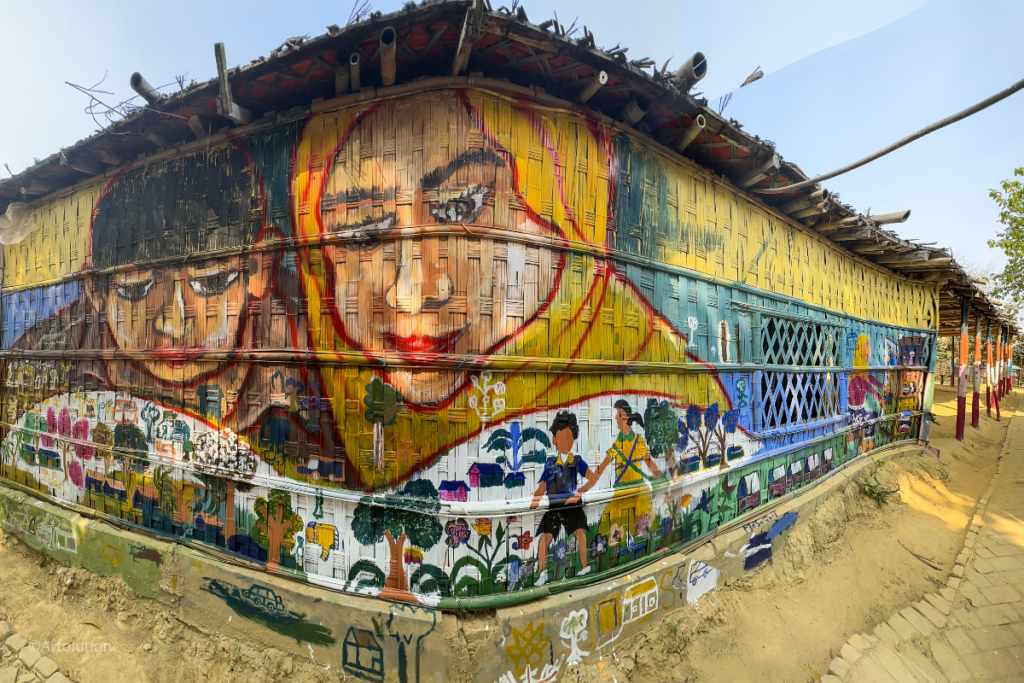
This mural depicts the importance of education for all Rohingya children. A boy and a girl are studying and attending school together. The lead artist of this mural, Anuwar Faruk, said, “Through our painting and art, we always try to portray social messages that are relatable to our community. The Rohingya girls are often dropped out from school and child marriage is very common. We want to promote the importance of equality in terms of education.”
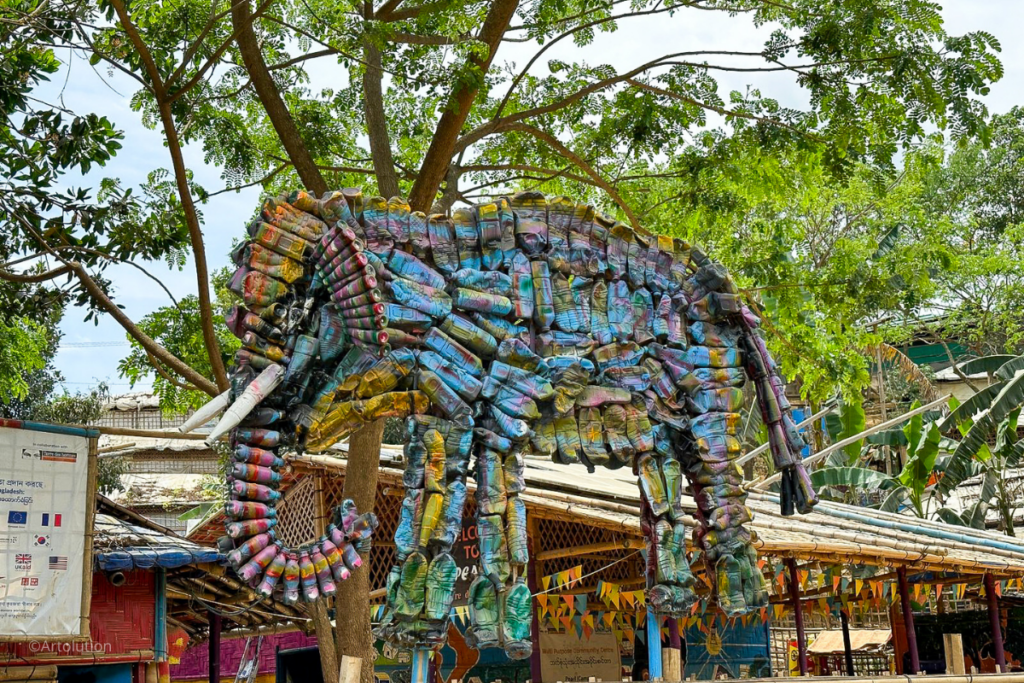
This sculpture of an elephant is made by lead artist Mohamamd Noor with the help of craftsman, Nobi Hossen. Elephants are an integral part of Rohingya folklore. This sculpture commemorates the importance of wildlife and respect for the natural world.
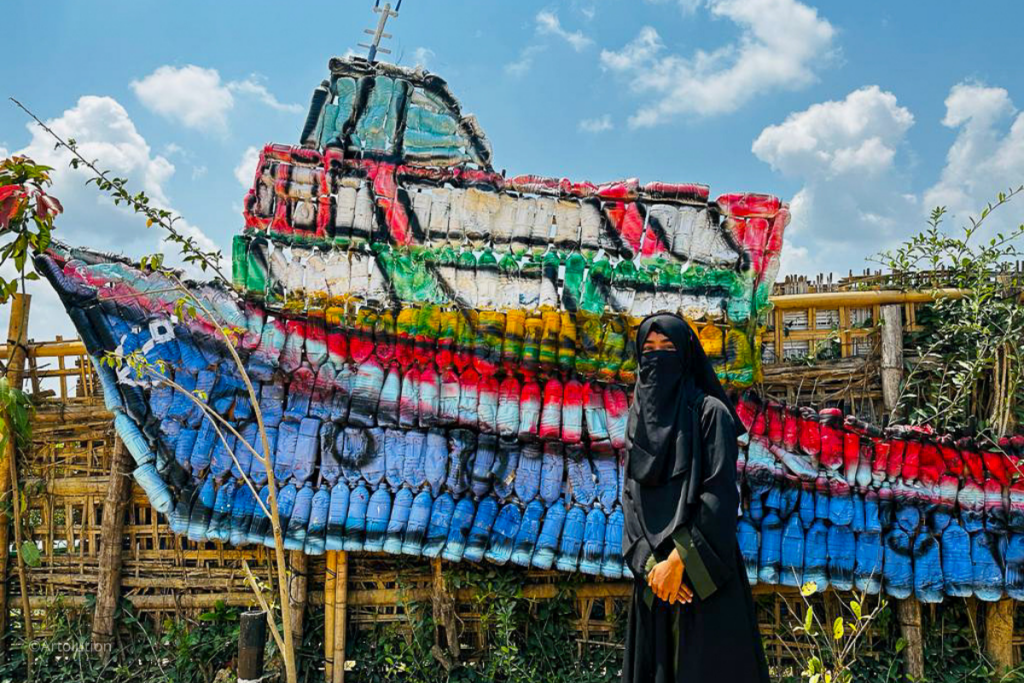
Somira, Community Lead Artist of Rohingya Artolution, is standing in front of a collaborative Foundstrument Soundstrument project. More than 50 community artists and kids participated in this project, utilizing discarded single-use water bottles to build a ship. Ships are an important representation of Rohingya life in Cox’s Bazar because many Rohingya refugees came to Bangladesh by ship after fleeing violence in Myanmar.
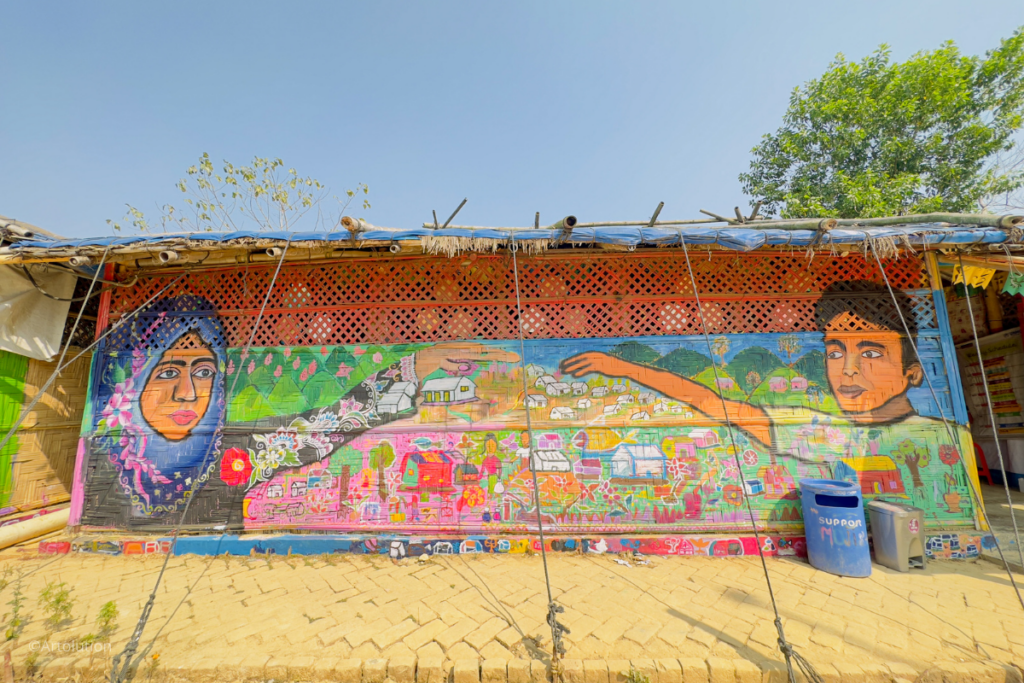
Men and women play an important role in maintaining peace in the camp. This mural shows that a beautiful world is created when men and women are treated equally and collaborate together in making important decisions throughout the camp.

This collaborative mural depicts a young girl who is learning to read and dreams of becoming an educator. The traditional patterns painted across her clothing and her book represent the importance of her culture. This piece puts emphasis on the right to literacy, the importance of cultural preservation and girls’ education.
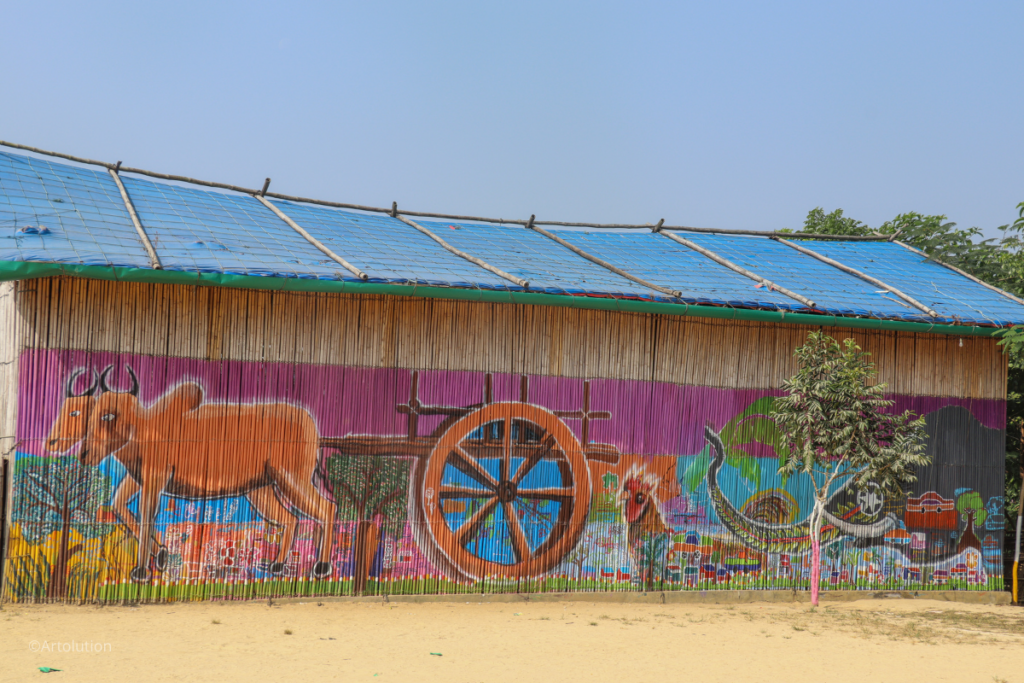
Mohammad Tofayel, a young Rohingya artist, worked on this collaborative mural of traditional cows and agriculture to share stories of his culture and memories from Myanmar with other children. Tofayel says, “Art for me is a salvation. There are many things I cannot say, many things I have confined inside of me that I can express through art without uttering a word. This is something that attracts me toward the paint brushes and paper.”
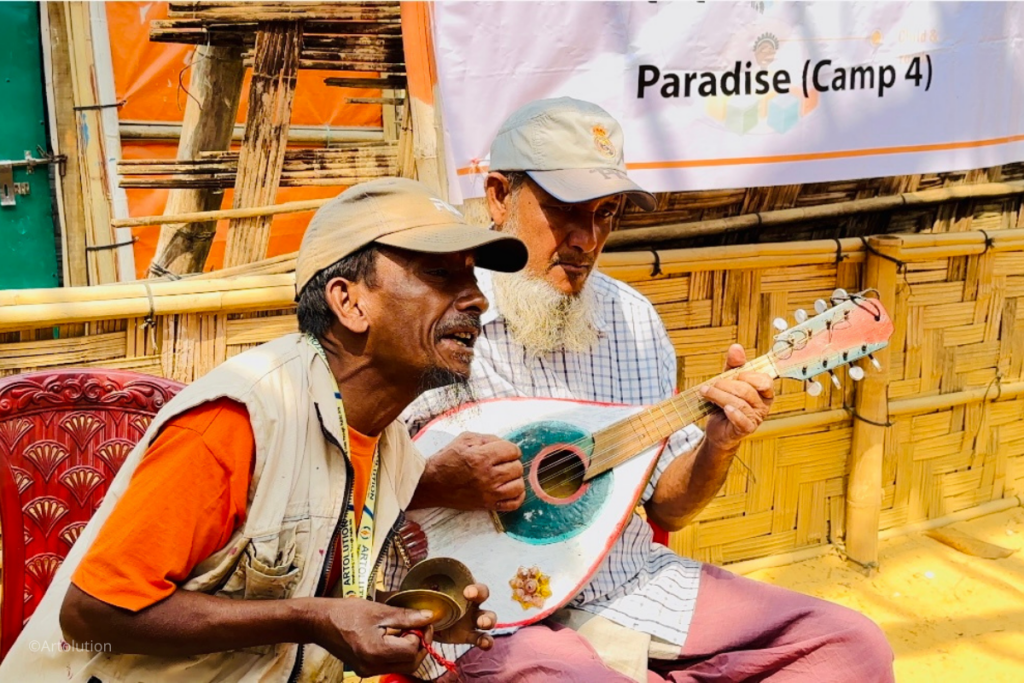
Nobi Hussein and Boshir Ullah perform Tarana Music for the Rohingya Community. 54-year-old Nobi Hossein fled violence in Myanmar and arrived in Bangladesh in 2017. Before joining Artolution, he used to sing traditional Kirat (Islamic songs) in the mosque in the camp.
Nobi Hossein says, “As I do not have education, I cannot read or write. All the songs I sing are from my memory. Just from my memory, I can sing all kinds of songs. My favorite type of music is Tarana music because this type of musical composition tells the story of Myanmar and how we all used to live our lives there, so younger generations can learn about our life and culture.”
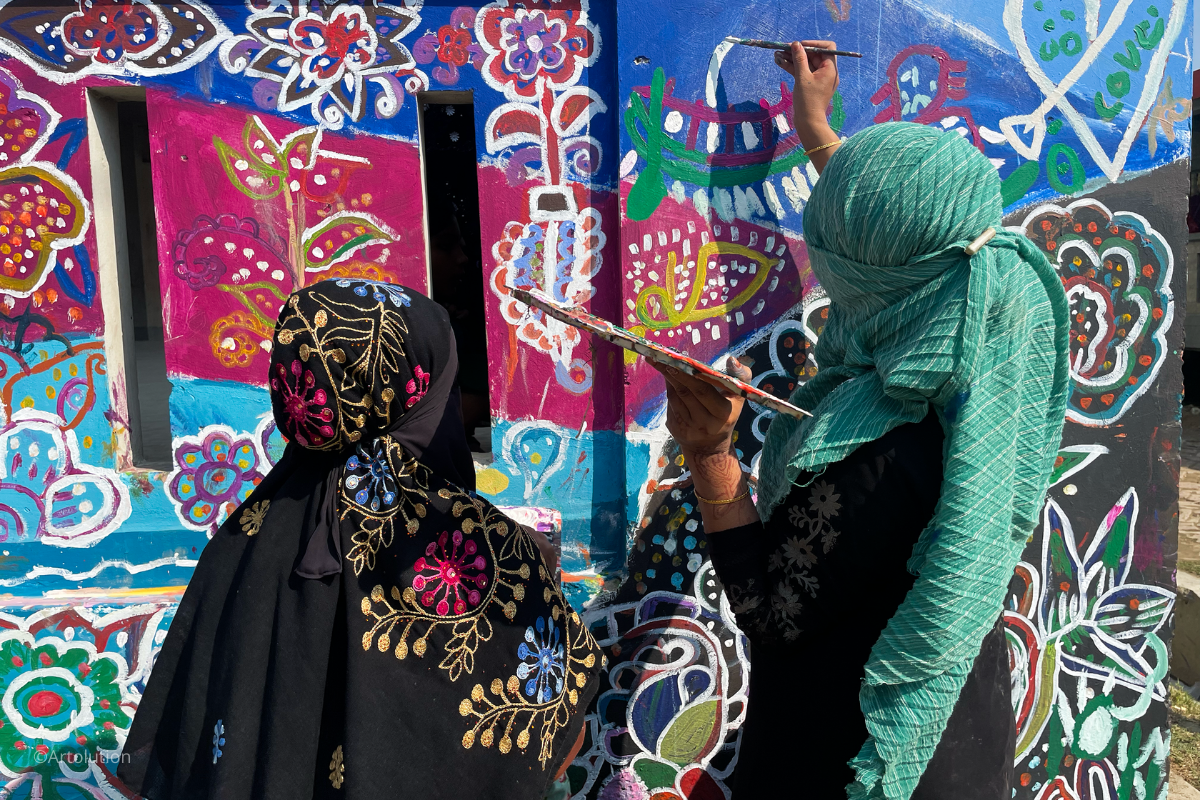
Rohingya youth painting a mural on Bhasan Char.
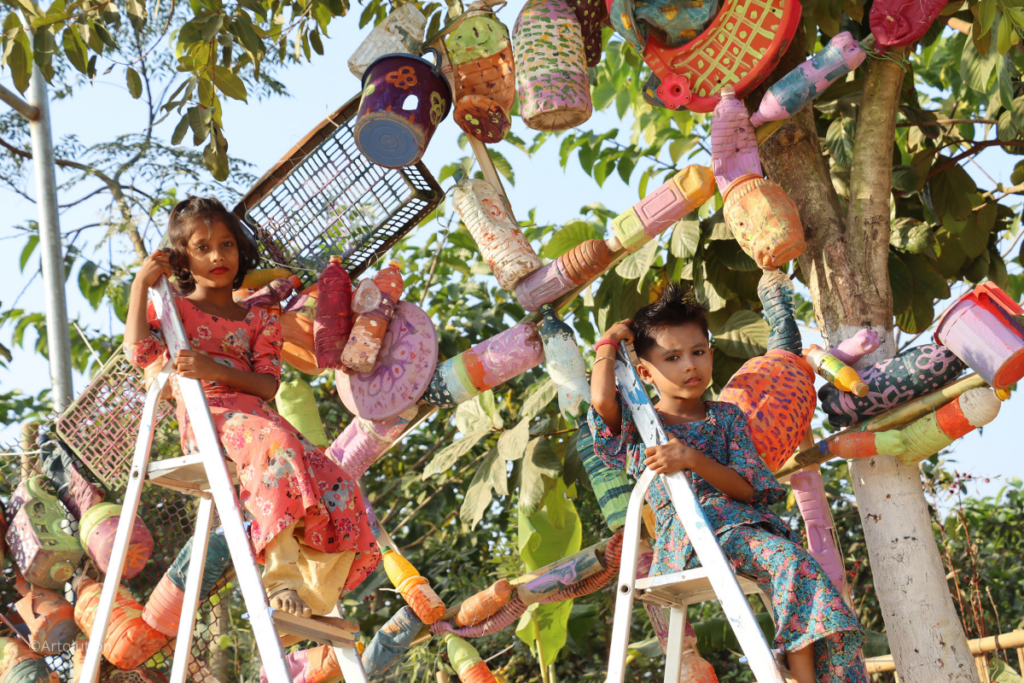
Rohingya youth participating in the creation of the peacock. Peacocks are the traditional bird of the Rohingya community and symbolize peace. They also mark an important rite of passage as a peacock feather is given to every child when they come of age and receive their first Quran.
